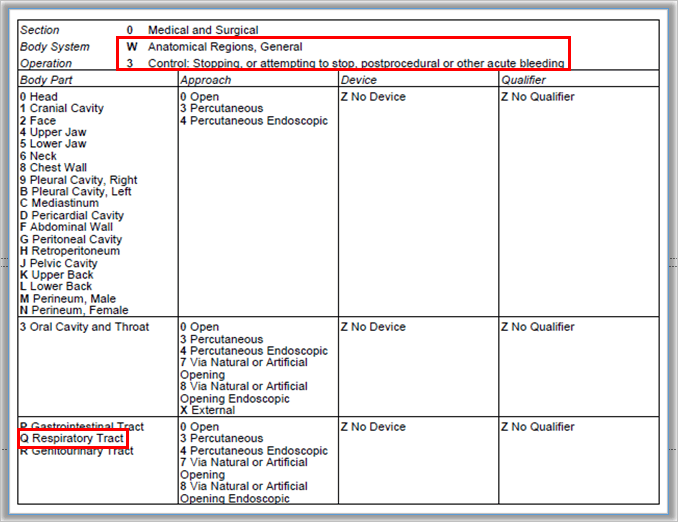Inside Angle
From 3M Health Information Systems
ICD-10 coding challenge: Epistaxis
CHALLENGE QUESTION
Epistaxis, or nasal bleeding, is a common occurrence and has been reported in up to 60 percent of the population. In many instances it is minor or self-limiting and persons do not seek medical treatment. In other cases, bleeding can be severe, can adversely impact the patient’s blood pressure, and require emergency intervention.
Treatments of epistaxis can include:
- topical vasoconstriction
- chemical cautery (e.g., silver nitrate)
- electrocautery
- anterior of posterior nasal packing (nasal tampon or gauze impregnated with petroleum jelly)
- use of a balloon system (including a modified Foley catheter)
- arterial ligation or embolization
According to the 2017 ICD-10-PCS Official Guidelines for Coding and Reporting, what root operation would be used for each of the epistaxis treatments listed above?
ANSWER
The root operation for all of the epistaxis treatments listed is Control. Effective October 1, 2017, the definition of root operation Control has changed. Note: there is only one difference between the 2016 and 2017 definitions below (in italics):
2016
Stopping, or attempting to stop, postprocedural bleeding.” If an attempt to stop postprocedural bleeding is initially unsuccessful, and to stop the bleeding requires performing any of the definitive root operations Bypass, Detachment, Excision, Extraction, Reposition, Replacement, or Resection, then that root operation is coded instead of Control.
2017
Control
Stopping, or attempting to stop, postprocedural or other acute bleeding. If an attempt to stop postprocedural or other acute bleeding is initially unsuccessful, and to stop the bleeding requires performing any of the definitive root operations Bypass, Detachment, Excision, Extraction, Reposition, Replacement, or Resection, then that root operation is coded instead of Control.
According to the 2017 definition, none of the treatments listed would otherwise code to Bypass, Detachment, Excision, Extraction, Reposition, Replacement, or Resection; therefore, Control is the correct root operation. And, since the root operation of Control is not an option in the Ear, Nose and Sinus body system, the procedures are coded to the General Anatomical Regions body system and Respiratory Tract body part as seen below:
Sue Belley is a project manager with the consulting services business of 3M Health Information Systems.



